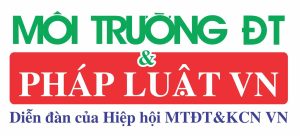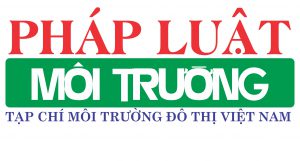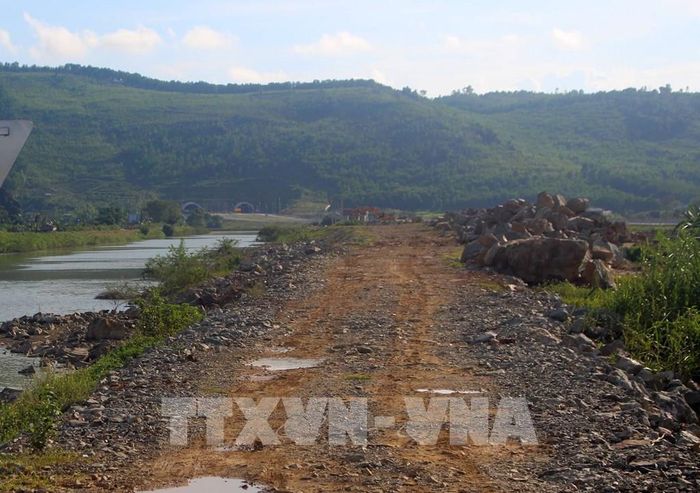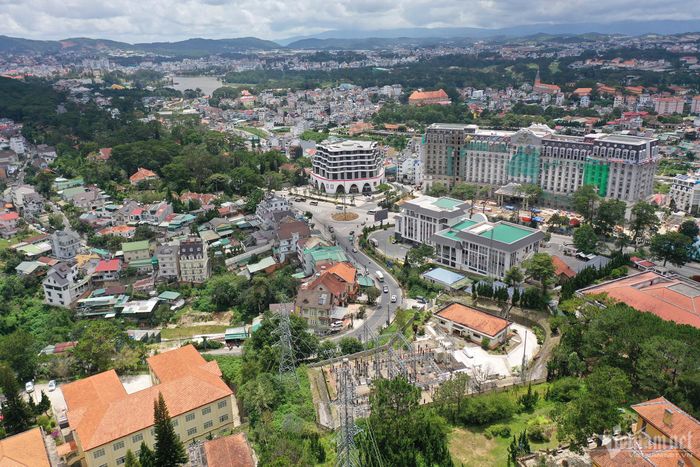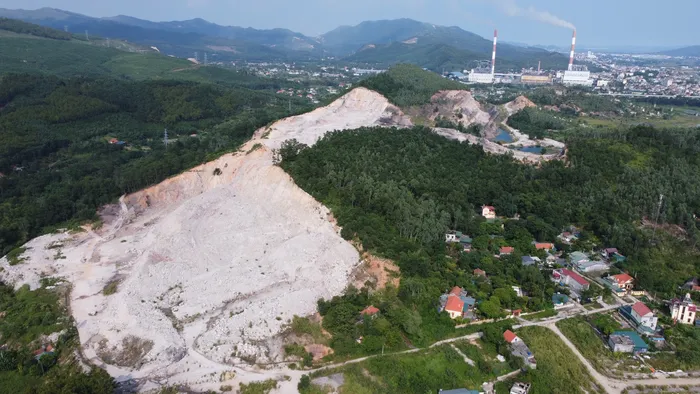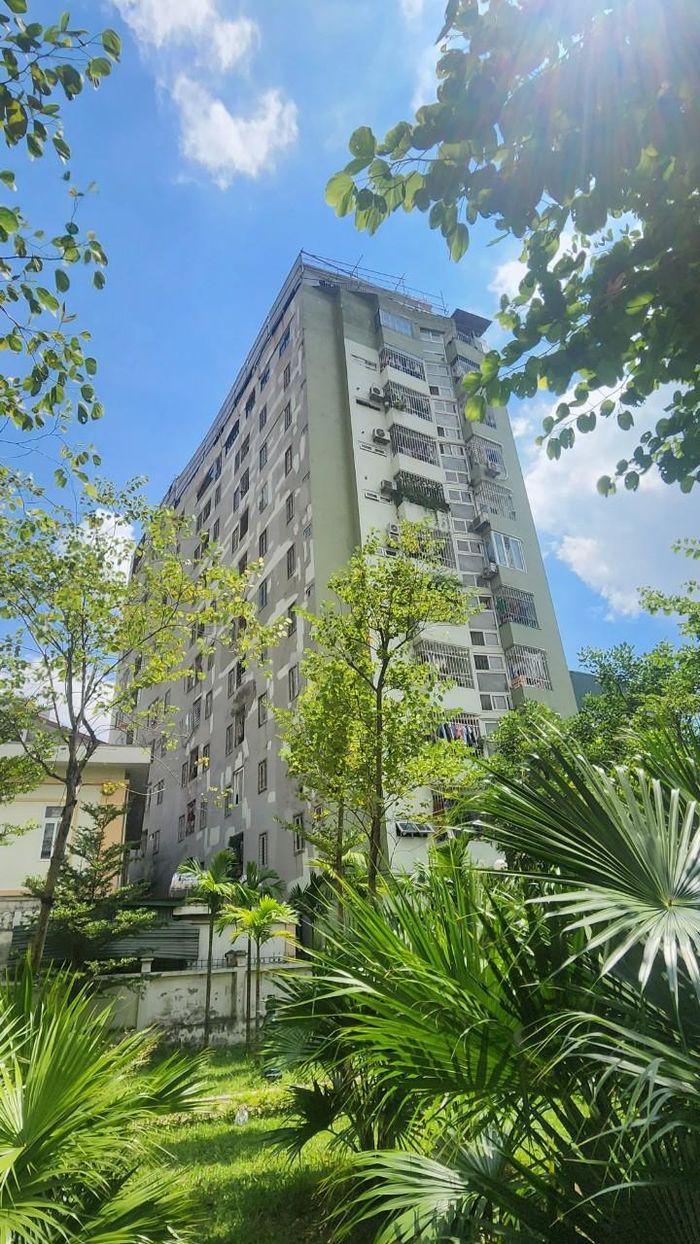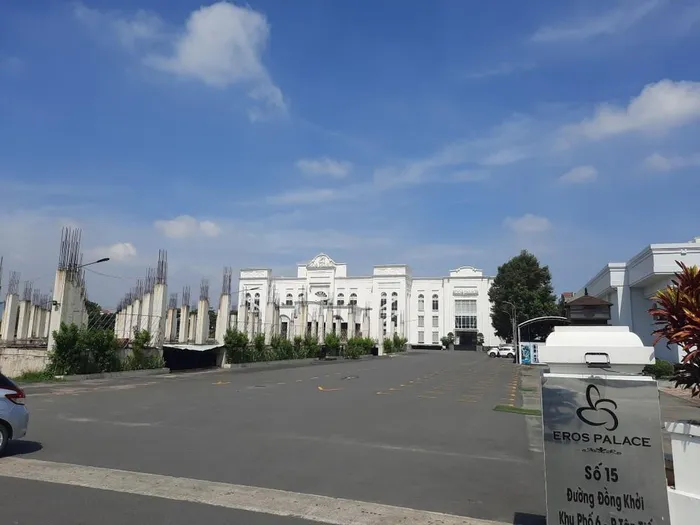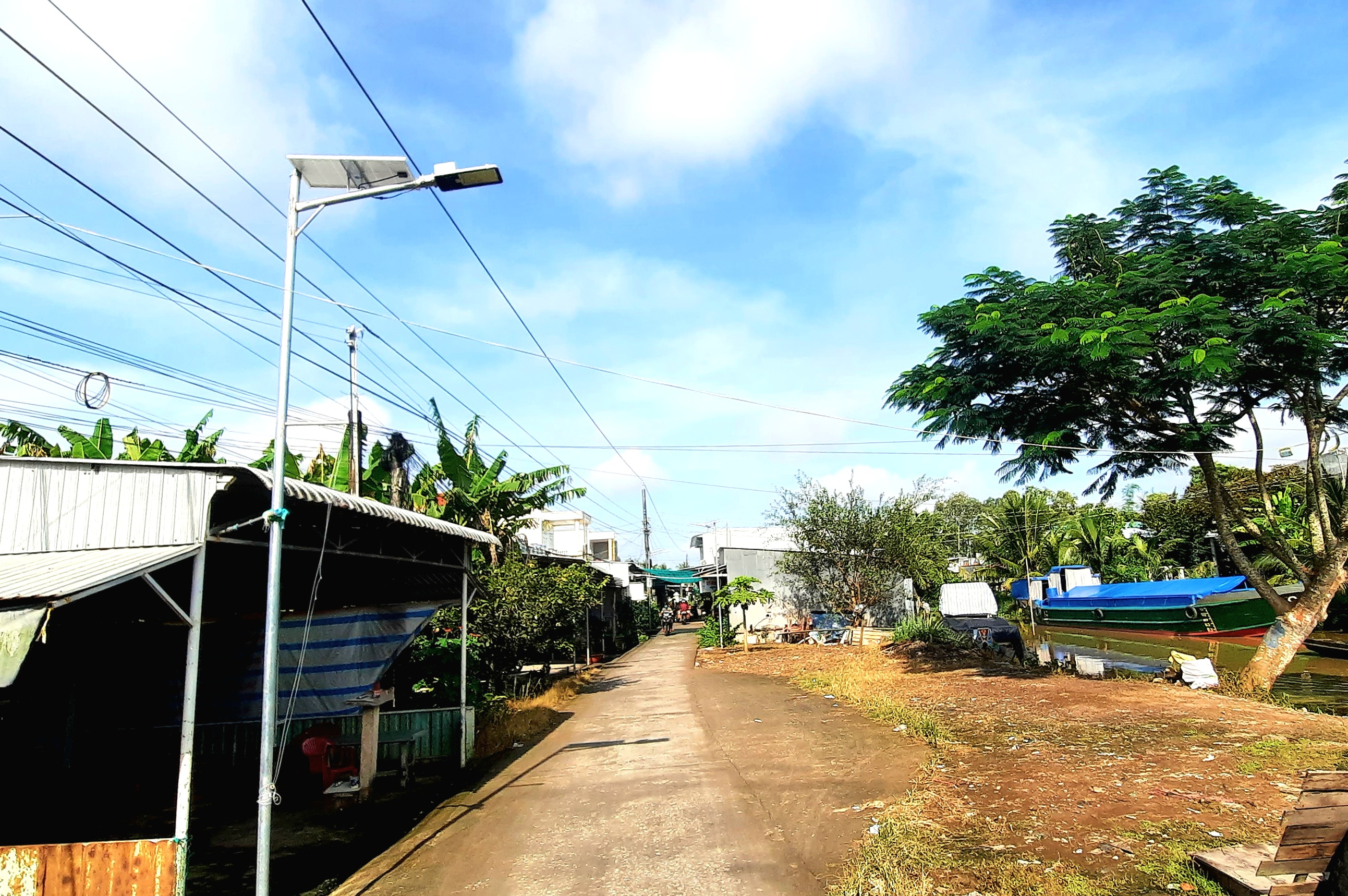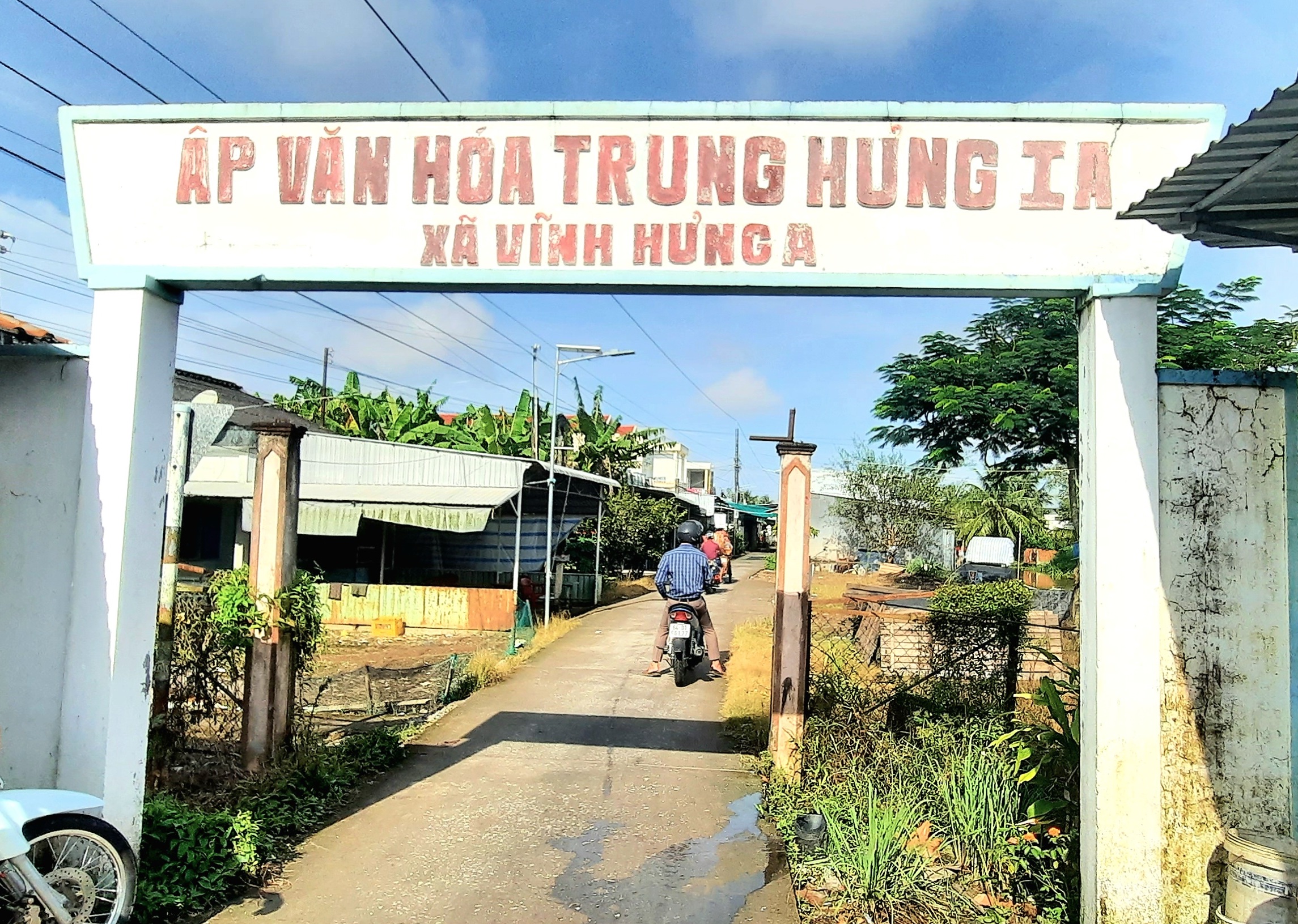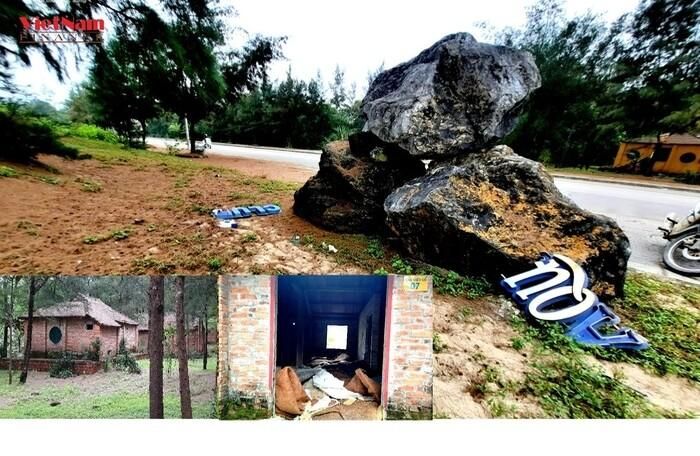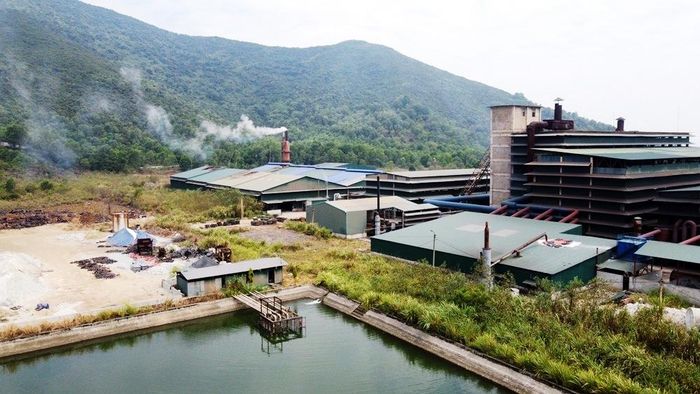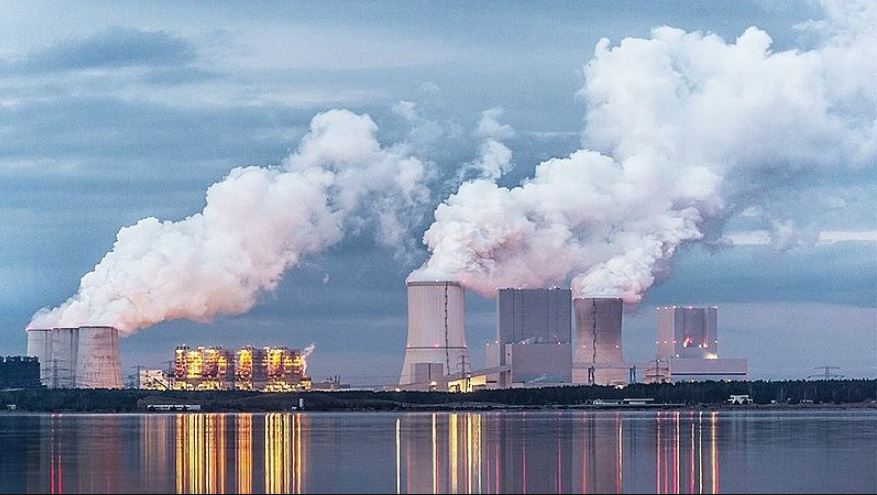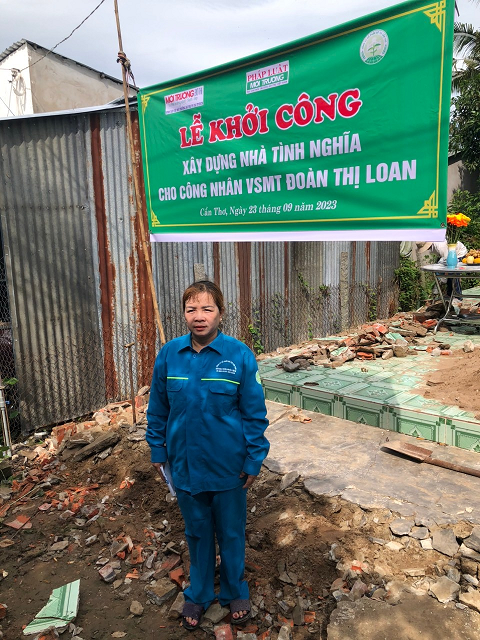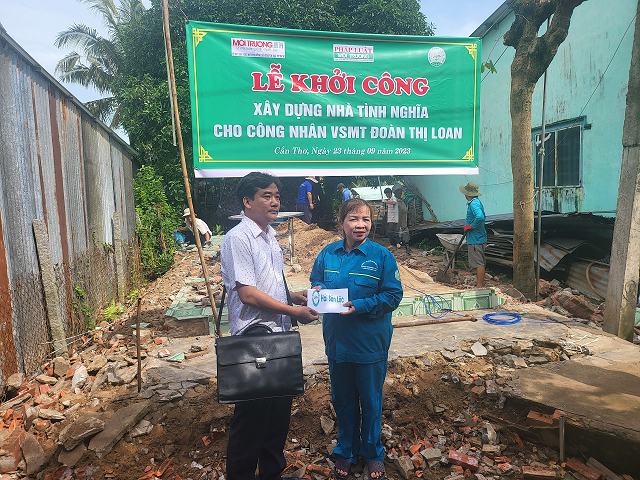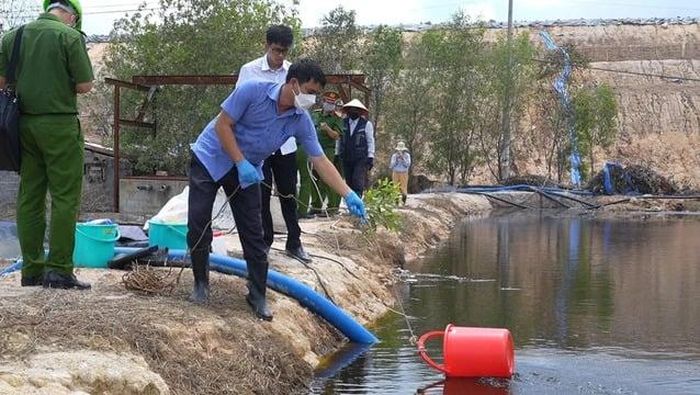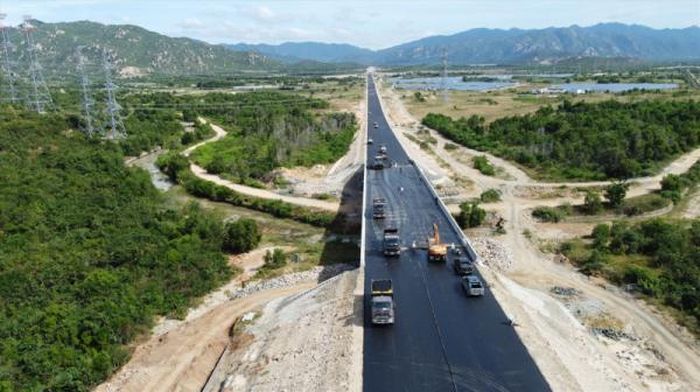Trân trọng giới thiệu tới quý độc giả Công bố quốc tế lĩnh vực môi trường số 36-2023 với những nội dung chính như sau:
Về quản lý môi trường
– Sự không đồng nhất về không gian và thời gian của ô nhiễm không khí ở Đông Phi.
– Một bức tranh tổng thể về sự phân bổ không gian của tải lượng ô nhiễm sông ở một khu vực có mức độ nhân văn cao.
– Dân số trong tương lai tiếp xúc với sóng nhiệt ở 83 siêu đô thị toàn cầu.
– Mô hình hóa dựa trên kịch bản về sự thay đổi tỷ lệ hấp thụ hóa chất ở Thụy Điển và Biển Baltic dưới sự thay đổi toàn cầu.
– Liệu Trung Quốc có thể đạt được cam kết CO2 vào năm 2030 và 2060 hay không?
– Sự phối hợp của các chính sách xanh và tác động giảm ô nhiễm của chúng: Phân tích định lượng các văn bản chính sách xanh của Trung Quốc.
– Khung chính sách cho nền kinh tế tuần hoàn: Bài học từ EU.
– Nghiên cứu về mối liên hệ giữa nền kinh tế kỹ thuật số và lượng khí thải carbon – Bằng chứng ở cấp tỉnh của Trung Quốc.
– Đánh giá và ưu tiên các rủi ro và chiến lược tài trợ tín dụng carbon cho thị trường carbon bền vững ở Trung Quốc.
– Các chương trình mua bán phát thải carbon có nâng cao hiệu quả đổi mới xanh của doanh nghiệp không?
Về môi trường đô thị
– Khu dân cư tiếp xúc lâu dài với ô nhiễm không khí và nguy cơ mắc các bệnh hô hấp mãn tính ở Ý: Nghiên cứu BIGEPI.
– Tác động của các vụ cháy rừng cực độ từ Rừng Brazil và đốt mía đến chất lượng không khí của siêu đô thị lớn nhất Nam Mỹ.
– Hiệu quả sinh thái và cải thiện sử dụng đất đô thị ở khu vực phía Tây Trung Quốc.
– Phát triển danh mục xử lý chất thải rắn bền vững cho mối quan hệ 3P (hành tinh-thịnh vượng-con người).
– Phân tích sự phân bổ dịch vụ hệ sinh thái và sự bất bình đẳng của các thành phố điển hình ở Trung Quốc.
– Đánh giá các yếu tố quyết định hành vi vì môi trường và phát thải trực tiếp của hộ gia đình.
– Tác động ghép nối từ xa đa quy mô của thay đổi sử dụng đất đối với các dịch vụ hệ sinh thái trong các cụm đô thị -Một nghiên cứu trường hợp ở vùng trung lưu của các cụm đô thị sông Dương Tử.
– Nước thải đã qua xử lý và cơ chế loại bỏ yếu làm tăng ô nhiễm nitrat ở các dòng sông đô thị.
– Đánh giá vòng đời quản lý chất thải sinh học đô thị – một nghiên cứu điển hình ở Séc.
Về môi trường khu công nghiệp
– Chiến lược giảm nguồn hay giải pháp cuối đường ống? Tác động của việc mua bán và sáp nhập xanh đến chiến lược đầu tư môi trường của các doanh nghiệp gây ô nhiễm nặng Trung Quốc.
– Mức lương tối thiểu ảnh hưởng như thế nào đến việc xả thải ô nhiễm của doanh nghiệp: Bằng chứng từ Trung Quốc.
– Tác động của đầu vào kỹ thuật số đến năng suất xanh của doanh nghiệp: Bằng chứng vi mô từ ngành sản xuất Trung Quốc.
– Sự cộng sinh công nghiệp thúc đẩy trao đổi vật chất tại Khu công nghiệp sinh thái trình diễn Ulan Buh: Mô hình MILP đa mục tiêu.
– Đánh giá về công nghệ giảm thiểu chất gây ô nhiễm không khí trong ngành sắt thép Trung Quốc hiện nay.
– Chính sách tín dụng xanh và quyên góp từ thiện của doanh nghiệp: Bằng chứng từ Trung Quốc.
– Cái nhìn sâu sắc mới về sự tắc nghẽn màng không thể đảo ngược trong các lò phản ứng sinh học màng gốm siêu lọc cỡ lỗ khác nhau (UCMBR) để xử lý nước thải dệt may cường độ cao.
– Quá trình oxy hóa quang điện tuần tự và phân hủy sinh học của dòng thải dệt may: Làm sáng tỏ cơ chế phân hủy và sự đa dạng của vi khuẩn.
– Cách áp dụng dung môi eutectic sâu dựa trên terpenoid để loại bỏ kháng sinh và thuốc nhuộm khỏi nước: Dự đoán lý thuyết, xác nhận thực nghiệm và đánh giá hóa học lượng tử.
CHUYÊN TRANG QUẢN LÝ MÔI TRƯỜNG
Tạp chí Môi trường và Đô thị Việt Nam
Xin trân trọng giới thiệu!
QUẢN LÝ MÔI TRƯỜNG
1. Validation, inter-comparison, and usage recommendation of six latest VIIRS and MODIS aerosol products over the ocean and land on the global and regional scales
Science of The Total Environment, Volume 884, 1 August 2023, 163794
Abstract
MODIS and VIIRS aerosol products have been used extensively by the scientific community. Products in operation include MODIS Dark Target (DT), Deep Blue (DB), and Multi-Angle Implementation of Atmospheric Correction (MAIAC) and VIIRS DT, DB, and NOAA Environmental Data Record products. This study comprehensively validated and inter-compared aerosol optical depth (AOD) and Ångstrom exponent (AE) over land and the ocean of these six products (seven different algorithms) on regional and global scales using AErosol RObotic NETwork (AERONET) and Maritime Aerosol Network (MAN) observations. In particular, we used AERONET inversions to classify AOD and AE biases into different scenarios (depending on absorption and particle size) to obtain retrieval error characteristics. The spatial patterns of the products and their differences were also analyzed. Collectively, although six satellite AODs are in good agreement with ground observations, VIIRS DB (land and ocean) and MODIS MAIAC (land only) AODs show better validation metrics globally and better performance in 8/10 world regions. Therefore, they are more recommended for usage. Although land AE retrievals are not capable of quantitative application at both instantaneous and monthly scales, their spatial patterns show qualitative potential. Ocean AE shows a relatively high correlation coefficient with ground measurements (>0.75), meeting the fraction of expected accuracy (> 0.70). Error characteristic analyses emphasize the importance of aerosol particle size and absorption-scattering properties for land retrieval, indicating that improving the representation of aerosol types is necessary. This study is expected to facilitate the usage selection of operating VIIRS and MODIS products and their algorithm improvements.
2. Spatial and temporal heterogeneity of air pollution in East Africa
Science of The Total Environment, Volume 886, 15 August 2023, 163734
Abstract
East Africa’s air pollution levels are deteriorating due to anthropogenic and biomass burning emissions and unfavorable weather conditions. This study investigates the changes and influencing factors of air pollution in East Africa from 2001 to 2021. The study found that air pollution in the region is heterogeneous, with increasing trends observed in pollution hot spots (PHS) while it decreased in pollution cold spots (PCS). The analysis identified four major pollution periods: High Pollution period 1, Low Pollution period 1, High Pollution period 2, and Low Pollution period 2, which occur during Feb-Mar, Apr-May, Jun-Aug and Oct-Nov, respectively. The study also revealed that long range transport of pollutants to the study area is primarily influenced by distant sources from the eastern, western, southern, and northern part of the continent. The seasonal meteorological conditions, such as high sea level pressure in the upper latitudes, cold air masses from the northern hemisphere, dry vegetation, and a dry and less humid atmosphere from boreal winter, further impact the transport of pollutants. The concentrations of pollutants were found to be influenced by climate factors, such as temperature, precipitation, and wind patterns. The study identified different pollution patterns in different seasons, with some areas having minimal anthropogenic pollution due to high vegetation vigor and moderate precipitation. Using Ordinary Least Square (OLS) regression and Detrended Fluctuation Analysis (DFA), the study quantified the magnitude of spatial variation in air pollution. The OLS trends indicated that 66 % of pixels exhibited decreasing trends while 34 % showed increasing trends, and DFA results indicating that 36 %, 15 %, and 49 % of pixels exhibited anti-persistence, random, and persistence in air pollution, respectively. Areas in the region experiencing increasing or decreasing trends in air pollution, which can be used to prioritize interventions and resources for improving air quality, were also highlighted. It also identifies the driving forces behind air pollution trends, such as anthropogenic or biomass burning, which can inform policy decisions aimed at reducing air pollution emissions from these sources. The findings on the persistence, reversibility, and variability of air pollution can inform the development of long-term policies for improving air quality and protecting public health.
3. A holistic picture of spatial distribution of river polluting loads in a highly anthropized area
Science of The Total Environment, Volume 887, 20 August 2023, 163784
Abstract
For many years, there has been a debate on the polluting loads affecting the Gulf of Naples, one of Italy’s most spectacular and iconic landscape. The wide territory bordering the Gulf includes the Sarno river basin (SRB) managed by the Southern Apennines River Basin District Authority in the framework of Unit of Management Sarno (UoM-Sarno). The paper investigated the anthropogenic pressures and their spatial distribution in the UoM-Sarno, revealing as SRB represents a hotspot of pollution mainly due to the high population density and widespread hydro-demanding activities which are responsible of high organic and eutrophication loads. The pollution sources, variably distributed on the area, and potentially conveyed to the wastewater treatment plants (WWTPs) located into SRB, were estimated considering the WWTPs treatment capacity as well. Results revealed a holistic picture of UoM-Sarno area allowing to establish the priorities of the interventions aimed at safeguarding the coastal marine resources. In particular, 2590 tons BOD/year were directly discharged into the Gulf of Naples due to the missing of sewers, and other 10,600 tons BOD/year are potentially discharged in the Sarno river reaching the sea, considering the contribution of population, industrial activity, and livestock.
4. Future population exposure to heatwaves in 83 global megacities
Science of The Total Environment, Volume 888, 25 August 2023, 164142
Abstract
Global warming leads to more frequent and intense heatwaves, putting urban populations at greater risk. Previous related studies considered only surface air temperature or one or two Shared Socioeconomic Pathways (SSPs) and were limited to specific regions. Moreover, no research focused on heatwave exposure in highly-populated global megacities facing severe threats. This study is the first to project future population exposure to heatwaves in 83 global megacities by 2100 using fine-resolution data, suitable indices reflecting human comfort in heatwaves by incorporating temperature and humidity, and a future population exposure projection and analysis framework. The results show that (1) the global frequency of extreme heatwave events and average change rate in each megacity sequentially increase from SSP1-2.6 to SSP5-8.5, and the change rate is generally larger in megacities in the Southern Hemisphere; (2) the increases in heatwave exposure are greatest under SSP370, and the change rates are generally larger for megacities in Southern Asia; (3) there is a high degree of inequality (Gini of 0.6 to 0.63) in future heatwave exposure globally, with the highest inequality under SSP5-8.5 and the lowest under SSP3-7.0; (4) the average exposure, increase rate, and change are highest in low-income megacities and lowest in high-income megacities. The distribution of exposure is the most balanced in middle-income megacities and the least balanced in high-income megacities; and (5) population growth contributes more to the change in exposure than total warming in high-income megacities under SSP1-2.6, and total urban warming contributes much more than population growth in all other cases. Every effort should be made to avoid the SSP3-7.0 scenario and pursue sustainable and rational urban economic development. Mumbai, Manila, Kolkata, and Jakarta warrant particular attention due to their rapid exposure growth. Additionally, policymakers and urban planners must focus on improving sustainable development planning for megacities in southern Asia and low-income megacities.
5. Scenario-based modelling of changes in chemical intake fraction in Sweden and the Baltic Sea under global change
Science of The Total Environment, Volume 888, 25 August 2023, 164247
Abstract
The climate in Europe is warming twice as fast as it is across the rest of the globe, and in Sweden annual mean temperatures are forecast to increase by up to 3–6 °C by 2100, with increasing frequency and magnitude of floods, heatwaves, and other extreme weather. These climate change-related environmental factors and the response of humans at the individual and collective level will affect the mobilization and transport of and human exposure to chemical pollutants in the environment. We conducted a literature review of possible future impacts of global change in response to a changing climate on chemical pollutants in the environment and human exposure, with a focus on drivers of change in exposure of the Swedish population to chemicals in the indoor and outdoor environment. Based on the literature review, we formulated three alternative exposure scenarios that are inspired by three of the shared socioeconomic pathways (SSPs). We then conducted scenario-based exposure modelling of the >3000 organic chemicals in the USEtox® 2.0 chemical library, and further selected three chemicals (terbuthylazine, benzo[a]pyrene, PCB-155) from the USEtox library that are archetypical pollutants of drinking water and food as illustrative examples. We focus our modelling on changes in the population intake fraction of chemicals, which is calculated as the fraction of a chemical emitted to the environment that is ingested via food uptake or inhaled by the Swedish population. Our results demonstrate that changes of intake fractions of chemicals are possible by up to twofold increases or decreases under different development scenarios. Changes in intake fraction in the most optimistic SSP1 scenario are mostly attributable to a shift by the population towards a more plant-based diet, while changes in the pessimistic SSP5 scenario are driven by environmental changes such as rain fall and runoff rates.
6. Can China achieve its 2030 and 2060 CO2 commitments? Scenario analysis based on the integration of LEAP model with LMDI decomposition
Science of The Total Environment, Volume 888, 25 August 2023, 164151
Abstract
China’s ambitious targets of peaking its Carbon dioxide (CO2) emissions on or before 2030 and achieving carbon neutrality by 2060 have been a topic of discussion in the international community. This study innovatively combines the logarithmic mean Divisia index (LMDI) decomposition method and the long-range energy alternatives planning (LEAP) model to quantitatively evaluate the CO2 emissions from energy consumption in China from 2000 to 2060. Using the Shared Socioeconomic Pathways (SSPs) framework, the study designs five scenarios to explore the impact of different development pathways on energy consumption and related carbon emissions. The LEAP model scenarios are based on the result of LMDI decomposition, which identifies the key influencing factors on CO2 emissions. The empirical findings of this study demonstrate that the energy intensity effect is the primary factor of the 14.7 % reduction in CO2 emissions observed in China from 2000 to 2020. Conversely, the economic development level effect has been the driving factor behind the increase of 50.4 % in CO2 emissions. Additionally, the urbanization effect has contributed 24.7 % to the overall change in CO2 emissions during the same period. Furthermore, the study investigates potential future trajectories of CO2 emissions in China up to 2060, based on various scenarios. The results suggest that, under the SSP1 scenarios. China’s CO2 emissions would peak in 2023 and achieve carbon neutrality by 2060. However, under the SSP4 scenarios, emissions are expected to peak in 2028, and China would need to eliminate approximately 2000 Mt of additional CO2 emissions to reach carbon neutrality. In other scenarios, China is projected to be unable to meet the carbon peak and carbon neutrality goals. The conclusions drawn from this study offer valuable insights for potential policy adjustments to ensure that China could fulfill its commitment to peak carbon emissions by 2030 and achieve carbon neutrality by 2060.
7. Synergies of green policies and their pollution reduction effects: Quantitative analysis of China’s green policy texts
Journal of Cleaner Production, Volume 412, 1 August 2023, 137360
Abstract
Synergy is an important step to enhance policy effectiveness and has been discussed in many fields. In order to promote the transformation and upgrading of polluting industries, green policy synergy is urgent to be studied comprehensively. Thus, this paper analyzes the temporal evolution laws of policy content synergy, policy department synergy, and policy type synergy, and further investigates the pollution reduction effect of policy synergy according to the green policy texts issued by Chinese ministries and commissions from 2001 to 2021. The results are as follows. (1) Policy content synergy significantly suppresses the emission intensity of various pollutants. The pollution reduction effect is proportional to the content synergy degree of policies. (2) The policy department synergy significantly reduces the emission intensity of sulfur dioxide, solid waste, and comprehensive pollution, but the suppression effect on chemical oxygen demand and ammonia nitrogen oxygen demand is not obvious. (3) The pollution reduction effect varies with the policy type synergy. Specifically, the synergistic pollution reduction effect of command and control, market incentive, and public participation policies is the best, followed by market incentive and public participation policies, and that of command and control and market incentive policies is the worst. (4) Further research shows that energy consumption significantly negatively regulates the pollution reduction of the policy content synergy and the policy type synergy, but not the policy department synergy. Meanwhile, adjusting industrial structure can promote pollution reduction. This study provides an important reference for enhancing the synergy among green policies and achieving the goal of carbon peak and carbon neutrality.
8. A policy framework for the circular economy: Lessons from the EU
Journal of Cleaner Production, Volume 412, 1 August 2023, 137176
Abstract
Transitioning from the ‘take-make-dispose’ linear production system to a circular economy can strengthen sustainability, and governments play a vital role. Recent scholarship has investigated policies for circular economy transition, but few studies take a perspective on circularity reform that spans geographies, industries, and product life-cycle stages. This article fills that gap by introducing a policy framework for the circular economy that includes over 100 policy instruments. The framework is developed from a review of 572 studies published in the academic and grey literature, along with policy databases and other documents. The findings are validated and supplemented by data from 33 semi-structured interviews with circular economy experts including scholars, policymakers, and representatives from NGOs and businesses. Derived primarily from the EU context but broadly applicable, the framework categorizes circular economy policies into nine groups. Six groups correspond to stages of the product life-cycle and three are overarching, capturing a holistic perspective mostly lacking in the literature. This study aims to promote a more structured discussion about circular economy policies and provides directions for future research by identifying topics where scholarship is thin. In addition to advancing theory, the framework can also serve as an assessment lens for designing circular economy policies.
9. Research on the nexus between the digital economy and carbon emissions -Evidence at China’s province level
Journal of Cleaner Production, Volume 413, 10 August 2023, 137484
Abstract
China is currently entering the era of the digital economy. Further development of the digital economy may provide a new dynamic mechanism to achieve carbon peak and carbon neutrality goals. Therefore, the digital economy activities in the process of reducing carbon emissions need to be urgently discussed. Using a panel dataset covering 30 Chinese provinces from 2013 to 2020, a two-way fixed effect model was employed to analyze the impact of the digital economy on carbon emissions. The results indicated that, during the study period, regional differences in the level of digital economy development were large. In addition, the spatial pattern showed a decrease from east to west. The development of the digital economy significantly reduced the intensity of carbon emissions. This conclusion that was supported by robustness tests and endogenous analysis. Moreover, this effect exhibited heterogeneity with respect to energy consumption, sub-indicators of the digital economy, and policy support. Additionally, government support positively moderated the relationship between the digital economy and carbon emissions. This moderating effect also showed heterogeneity. Most importantly, the relationship between the digital economy and carbon emissions was transmitted through different dimensions of science and technology innovation. These findings provide a further scientific basis for developing the digital economy and promoting green development, which is beneficial for achieving carbon peak and carbon neutrality.
10. Evaluating and prioritizing the carbon credit financing risks and strategies for sustainable carbon markets in China
Journal of Cleaner Production, Volume 414, 15 August 2023, 137677
Abstract
Carbon markets are crucial to attaining sustainable development objectives given the pressing need to cut greenhouse gas emissions and combat climate change. China is a key player in the fight against climate change since the country emits the most greenhouse emissions globally. In light of China’s carbon markets, this study evaluates the risks and mitigation strategies related to financing carbon credit projects. Fuzzy Analytical Hierarchy Process (FAHP) and Fuzzy Viekriterijumsko Kompromisno Rangiranj (FVIKOR) methodologies are used to assess carbon finacing risks and strategies for the growth of China’s carbon market. The FAHP method evaluated carbon credit financing risks and sub-risks, while the FVIKOR method prioritized mitigation strategies. The findings of the FAHP method show that regulatory and policy risks, financial risks, and operational risks are the major risks in the Chinese carbon markets. To mitigate these risks, prioritizing strategies based on FVIKOR suggests that developing stakeholder relationships, financial stability, and transparency would be a practical approach to achieving efficient, productive, and sustainable carbon markets in China. The study provides practical policy implications for stakeholders involved in carbon credit financing and contributes to global climate change efforts by offering insights into carbon credit market risks and opportunities.
11. Do carbon emission trading schemes enhance enterprise green innovation efficiency? Evidence from China’s listed firms
Journal of Cleaner Production, Volume 414, 15 August 2023, 137668
Abstract
Under the imperatives of economic improvement and environmental protection, green innovation efficiency has garnered increased global interest. This study explores the effects of China’s carbon emission trading scheme (CETS) on firm green innovation efficiency (GIE) through Super-Slack Based Model Data Envelopment Analysis, the difference-in-difference-in-differences method, the mediation effect model, and the instrumental variables-two stage least square model. An empirical analysis of data from China’s A-share listed corporations between 2007 and 2017 is conducted, based on the Porter hypothesis. The main results show that CETS positively impacts enterprises’ GIE, indicating that weak Porter hypothesis can be observed in China. This outcome is still valid after robustness tests. Further analyses demonstrate that: (1) China’s CETS enhances enterprises’ GIE by encouraging green product innovation; (2) the promoting effect of China’s CETS on enterprises’ GIE will be significantly enhanced with the improvement of carbon market liquidity; (3) China’s CETS has a significant positive impact on the GIE of small enterprises, firms with weak political relevance, and corporations that are located in regions where policy pressure is high. This study provides an evaluation of the policy effectiveness of China’s CETS at a micro-level and offers statistical support and specific policy recommendations to improve the CETS.
12. Can digital investment improve corporate environmental performance? — Empirical evidence from China
Journal of Cleaner Production, Volume 414, 15 August 2023, 137669
Abstract
Enterprise environmental performance has always been the core topic of enterprise environmental management. Under the promotion of the new generation of technological revolution, whether enterprise digitalization can help improve enterprise environmental performance has become a new research hotspot. Taking Chinese A-share listed industrial enterprises as the research sample, this paper discusses the influence mechanism of digitalization on corporate environmental performance. The results show that:(1) digital investment has a significant U-shaped relationship with corporate environmental performance; (2) Technological innovation is an important intermediary channel through which digital investment promotes enterprise environmental performance: digital investment can positively promote technological innovation, and there is also a significant U-shaped relationship between technological innovation and corporate environmental performance; (3) The hometown identification degree of executives positively moderates the relationship between technological innovation and corporate environmental performance. Accordingly, we suggest that companies need to adopt hedging policies in the early stage to reduce the adverse environmental effects caused by digital technology and accelerate the digital transformation of enterprises and promote the development of technological innovation to achieve the goal of coordinated environmental protection. Finally, we hope that executives will actively participate in this activity and jointly promote the development of this cause.
13. Impact of climate warming on population mortality in South China
Journal of Cleaner Production, Volume 414, 15 August 2023, 137789
Abstract
Climate warming poses a serious threat to public health, especially in South China. This study analyzes the impact of climate warming on population mortality and adaptive behavior in South China from the perspective of economic heterogeneity. The study constructs a temperature–mortality response model using mortality data from 134 major cities in South China from 1999 to 2019. The two-way fixed effects method is used for empirical estimation. The following are the main findings. (1) High temperature has a significant impact on mortality in South China. Compared with rich cities, high temperature significantly increases mortality in poor cities. (2) Under the RCP8.5 concentration scenario, climate warming will increase population mortality by 19.37% in South China and 34.32% in poor cities over the period 2080–2099. (3) Outmigration by the rural population is an important adaptive behavior to high temperatures. This behavior also shows economic heterogeneity. These findings have several policy implications for mitigating the impact of climate warming on mortality. Policymakers should provide more support to poor areas to improve their ability to adapt to climate change.
14. Is ecological footprint related to foreign trade? Evidence from the top ten fastest developing countries in the global economy
Journal of Cleaner Production, Volume 413, 10 August 2023, 137517
Abstract
An ecological footprint (EF) refers to the resources that are used by the people or production companies in an area for commerce, which includes the production of food, water resources, and housing; however, it also includes foreign trade of the products produced. The present study aims to examine how foreign trade affects EF and recommend specific new policies or revisions to policies to reduce EF. EF is used as an environmental indicator in the present study. The top 10 fastest developing countries (Argentina, Brazil, China, India, Indonesia, Mexico, Poland, South Africa, South Korea, and Turkey) comprised the study sample. The analyses were conducted using annual data for the period of 1990–2018; export and import data were taken as foreign trade variables, and their relationship with EF was tested through two different models. Renewable energy consumption (REC) and national income were modeled as control variables, and second-generation panel data analysis techniques were used. When the Durbin-Hausman cointegration test was applied, the data indicated a strong correlation between foreign trade and EF. According to the Common Correlated Effects (CCE) coefficient estimator, there was an inverse relationship between exports and REC and EF and a positive relationship with economic growth. When the Augmented Mean Group (AMG) coefficient estimator was applied, an inverse correlation was indicated among exports, imports, REC, and EF. Based on the findings of the analyses, it can be argued that policymakers and market players should manage foreign trade and environmental policies in a harmonized manner, and long-term planning should be shaped around these test results.
15. Global climate policy effectiveness: A panel data analysis
Journal of Cleaner Production, Volume 412, 1 August 2023, 137321
Abstract
The global energy landscape is experiencing substantial transformations, and the energy policies of various countries are also evolving under the influence of economic development and climate change mitigation. The Policies and Measures Database of the International Energy Agency assembles over 7000 pieces of information on energy policy from around the world and classifies them into four categories based on their objectives: addressing climate change policy, renewable energy policy, energy efficiency policy, and building energy efficiency policy. This paper aims to analyze the status quo of global energy policy development from these four aspects and examine the effectiveness of both aggregate and individual instruments utilizing an econometric model based on panel data analysis. Moreover, this paper analyzes the energy policy paths of six leading countries and compares the effectiveness of their policies. The results revealed that global climate policy plays a significant role in reducing carbon emission, while the performance of policies varies among different countries. Based on these findings, this paper provides reference for policymakers to formulate energy policies aligned with global and domestic requirements.
16. Spatiotemporal trends of cardiovascular disease burden attributable to ambient PM2.5 from 1990 to 2019: A global burden of disease study
Science of The Total Environment, Volume 885, 10 August 2023, 163869
Abstract
There is little known about the global burden of CVD attributable to ambient PM2.5 (referred to as CVD burden hereinafter) and its secular trend across different regions and countries. We aimed to evaluate the spatiotemporal trends in CVD burden at the global, regional and national levels from 1990 to 2019. Data on CVD burden including mortality and disability adjusted of life years (DALYs) from 1990 to 2019 were extracted from the Global Burden of Disease Study 2019. Cases, the age-standardized rate of mortality (ASMR) and DALYs (ASDR) were estimated by age, sex and sociodemographic index (SDI). Estimated annual percentage change (EAPC) was calculated to evaluate the temporal changing in ASDR and ASMR from 1990 to 2019. In 2019, 2.48 million deaths and 60.91 million DALYs of CVD were attributed to ambient PM2.5 globally. Most CVD burden occurred in males, elderly and the middle SDI region. At national level, Uzbekistan, Egypt, and Iraq had the highest ASMR and ASDR. Despite remarkable increase in number of DALYs and deaths of CVD worldwide from 1990 to 2019, we observed nonsignificant change in ASMR (EAPC: 0.06, 95 % CI: −0.01, 0.13) and slight increment in ASDR (EAPC: 0.30, 95 % CI: 0.23, 0.37). The EAPCs of ASMR and ASDR were negatively associated with SDI in 2019, while the low-middle SDI region exhibited the fastest growth of ASMR and ASDR with EAPCs of 3.25 (95 % CI: 3.14, 3.37) and 3.36 (95 % CI: 3.22, 3.49), respectively. In conclusion, the global CVD burden attributable to ambient PM2.5 has largely increased over the past three decades. The population growth, aging and SDI contributed to the heterogeneity of spatial and temporal distribution. Enforcing policy to improving air quality is required to halt the growing burden of PM2.5 on health.
MÔI TRƯỜNG ĐÔ THỊ
1. Long-term residential exposure to air pollution and risk of chronic respiratory diseases in Italy: The BIGEPI study
Science of The Total Environment, Volume 884, 1 August 2023, 163802
Abstract
Long-term exposure to air pollution has adverse respiratory health effects. We investigated the cross-sectional relationship between residential exposure to air pollutants and the risk of suffering from chronic respiratory diseases in some Italian cities.
In the BIGEPI project, we harmonised questionnaire data from two population-based studies conducted in 2007–2014. By combining self-reported diagnoses, symptoms and medication use, we identified cases of rhinitis (n = 965), asthma (n = 328), chronic bronchitis/chronic obstructive pulmonary disease (CB/COPD, n = 469), and controls (n = 2380) belonging to 13 cohorts from 8 Italian cities (Pavia, Turin, Verona, Terni, Pisa, Ancona, Palermo, Sassari). We derived mean residential concentrations of fine particulate matter (PM10, PM2.5), nitrogen dioxide (NO2), and summer ozone (O3) for the period 2013–2015 using spatiotemporal models at a 1 km resolution. We fitted logistic regression models with controls as reference category, a random-intercept for cohort, and adjusting for sex, age, education, BMI, smoking, and climate.
Mean ± SD exposures were 28.7 ± 6.0 μg/m3 (PM10), 20.1 ± 5.6 μg/m3 (PM2.5), 27.2 ± 9.7 μg/m3 (NO2), and 70.8 ± 4.2 μg/m3 (summer O3). The concentrations of PM10, PM2.5, and NO2 were higher in Northern Italian cities. We found associations between PM exposure and rhinitis (PM10: OR 1.62, 95%CI: 1.19–2.20 and PM2.5: OR 1.80, 95%CI: 1.16–2.81, per 10 μg/m3) and between NO2 exposure and CB/COPD (OR 1.22, 95%CI: 1.07–1.38 per 10 μg/m3), whereas asthma was not related to environmental exposures. Results remained consistent using different adjustment sets, including bi-pollutant models, and after excluding subjects who had changed residential address in the last 5 years.
We found novel evidence of association between long-term PM exposure and increased risk of rhinitis, the chronic respiratory disease with the highest prevalence in the general population. Exposure to NO2, a pollutant characterised by strong oxidative properties, seems to affect mainly CB/COPD.
2. Introducing a land use-based weight factor in regional health risk assessment of PAHs in soils of an urban agglomeration
Science of The Total Environment, Volume 887, 20 August 2023, 163833
Abstract
The high heterogeneity of land uses in urban areas has led to large spatial variations in the contents and health risks of polycyclic aromatic hydrocarbons (PAHs) in soils. A land use-based health risk assessment (LUHR) model was proposed for soil pollution on a regional scale by introducing a land use-based weight factor, which considered the differences in exposure levels of soil pollutants to receptor populations between land uses. The model was applied to assess the health risk posed by soil PAHs in the rapidly industrializing urban agglomeration of Changsha-Zhuzhou-Xiangtan Urban Agglomeration (CZTUA). The mean concentration of total PAHs (∑PAHs) in CZTUA was 493.2 μg/kg, and their spatial distribution was consistent with emissions from industry and vehicles. The LUHR model suggested the 90th percentile health risk value was 4.63 × 10−7, which was 4.13 and 1.08 times higher than those of traditional risk assessments that have adopted adults and children as default risk receptors, respectively. The risk maps of LUHRs showed that the ratios of the area exceeding the risk threshold (1 × 10‐6) to the total area were 34.0 %, 5.0 %, 3.8 %, 2.1 %, and 0.2 % in the industrial area, urban green space, roadside, farmland, and forestland, respectively. The LUHR model back-calculated the soil critical values (SCVs) for ∑PAHs under different land uses, resulting in values of 6719, 4566, 3224, and 2750 μg/kg for forestland, farmland, urban green space, and roadside, respectively. Compared with the traditional health risk assessment models, this LUHR model identified high-risk areas and drew risk contours more accurately and precisely by considering both the spatial variances of soil pollution and their exposure levels to different risk receptors. This provides an advanced approach to assessing the health risks of soil pollution on a regional scale.
3. Impact of extreme wildfires from the Brazilian Forests and sugarcane burning on the air quality of the biggest megacity on South America
Science of The Total Environment, Volume 888, 25 August 2023, 163439
Abstract
Recently, extreme wildfires have damaged important ecosystems worldwide and have affected urban areas miles away due to long-range transport of smoke plumes. We performed a comprehensive analysis to clarify how smoke plumes from Pantanal and Amazon forests wildfires and sugarcane harvest burning also from interior of the state of São Paulo (ISSP) were transported and injected into the atmosphere of the Metropolitan Area of São Paulo (MASP), where they worsened air quality and increased greenhouse gas (GHG) levels. To classify event days, multiple biomass burning fingerprints as carbon isotopes, Lidar ratio and specific compounds ratios were combined with back trajectories modeling. During smoke plume event days in the MASP fine particulate matter concentrations exceeded the WHO standard (>25 μg m−3), at 99 % of the air quality monitoring stations, and peak CO2 excess were 100 % to 1178 % higher than non-event days. We demonstrated how external pollution events such as wildfires pose an additional challenge for cities, regarding public health threats associated to air quality, and reinforces the importance of GHG monitoring networks to track local and remote GHG emissions and sources in urban areas.
4. Performance of a biocrust cyanobacteria-indigenous bacteria (BCIB) co-culture system for nutrient capture and transfer in municipal wastewater
Science of The Total Environment, Volume 888, 25 August 2023, 164236
Abstract
This study aimed to explore the potential for transferring nutrients from municipal wastewater through the cultivation of biocrust cyanobacteria, since little is known regarding the growth and bioremediation performance of biocrust cyanobacteria in actual wastewater, especially their interaction with indigenous bacteria. Therefore, in this study, the biocrust cyanobacterium, Scytonema hyalinum was cultivated in municipal wastewater under different light intensities, to establish a biocrust cyanobacteria-indigenous bacteria (BCIB) co-culture system, in order to investigate its nutrient removal efficiency. Our results revealed that the cyanobacteria-bacteria consortium could remove up to 91.37 % and 98.86 % of dissolved nitrogen and phosphorus from the wastewater, respectively. The highest biomass accumulation (max. 6.31 mg chlorophyll-a L−1) and exopolysaccharide secretion (max. 21.90 mg L−1) were achieved under respective optimized light intensity (60 and 80 μmol m−2 s−1). High light intensity was found to increase exopolysaccharide secretion, but negatively impacted cyanobacterial growth and nutrient removal. Overall, in the established cultivation system, cyanobacteria accounted for 26–47 % of the total bacterial abundance, while proteobacteria consisted up to 50 % of the mixture. The composition and ratio of cyanobacteria to indigenous bacteria were shown to be altered by adjusting the light intensity of the system. Altogether, our results clearly illustrate the potential of the biocrust cyanobacterium S. hyalinum in establishing a BCIB cultivation system under different light intensity for wastewater treatment and other end-applications (e.g., biomass accumulation and exopolysaccharide secretion). This study presents an innovative strategy for transferring nutrients from wastewater to drylands through cyanobacterial cultivation and subsequent biocrust induction.
5. Urban land use eco-efficiency and improvement in the western region of China
Journal of Cleaner Production, Volume 412, 1 August 2023, 137385
Abstract
This paper quantifies urban land use eco-efficiency (ULUEE) and explores its improvement in the context of western China. We propose a hybrid model that includes the Super-slack-based measure model (Super-SBM) and a varying co-efficient panel model using data from 11 provincial cities in the western regions of China from 2000 to 2018. The results show that overall ULUEE, pure technical efficiency and scale efficiency were ecologically inefficient. Meanwhile, ULUEE differences between cities mainly reflect different levels of pure technical efficiency. Further, the linkage between urban population density and ULUEE can be expressed in inverted-U and U-shape curves, and most cities’ industrial development positively affects ULUEE, while most cities’ fixed asset investments negatively affect ULUEE. Moreover, land management institutions (LMIs) play a moderator role, shaping the main impacts of industrial development on ULUEE. Therefore, the findings suggest that improving ULUEE in the western region of China should focus on attracting inflows of highly skilled people, optimizing resource allocation, and guiding/regulating local government actions.
6. Developing a sustainability solid waste treatment portfolio for 3Ps (planet-prosperity-people) nexus
Journal of Cleaner Production, Volume 415, 20 August 2023, 137698
Abstract
Municipal solid waste requires effective management to avoid adverse environmental impacts, such as pollution emissions and leachate discharge, and to enhance economic feasibility and societal acceptance. The current waste policy lacks the synergistic and integrated effect of the 3Ps dimensions – planet (environment), prosperity (economic), and people (social) – leading to unsustainable municipal solid waste management. This study develops a novel 3Ps nexus graphical portfolio that can be universally adoptable in various regions to quantitatively evaluate the life cycle sustainability of solid waste facilities relative to business-as-usual (i.e., open landfill). The 3Ps assessments, which share the backbone of life cycle analysis, are conducted to form the portfolio. Taking Malaysia as a case study, mechanical material recovery facility is the most sustainable solid waste facility, outperforming open landfill by 7.5 (environmental), 2.7 (economic), and 1.95 (social) times, followed by incineration, anaerobic digestion, tunnel composting, and sanitary landfill. Mechanical material recovery facility (−67.7 Pt) and incineration (−9.26 Pt) are the only solid waste treatment facilities with net environmental benefits due to the 298- and 4.18-times environmental saving effect, respectively, from their generated value-added by-product. Ten scenarios are further analysed, combining existing national municipal solid waste policies and zero-landfill targets. A scenario with 40% recycling is the most sustainable scenario for fulfilling the 3Ps. Recycling is recommended to be coupled with tunnel composting and anaerobic digestion to treat heterogeneous waste, rendering the scenario 1.04–33 times more sustainable than other integrated scenarios. To align with the 2030 Agenda, waste segregation is essential for sustainable waste management and can be supported by technology improvement, financial subsidy, and legislative enforcement.
7. Dissecting ecosystem services distribution and inequality of typical cities in China
Journal of Cleaner Production, Volume 415, 20 August 2023, 137800
Abstract
Conserving and restoring ecosystem services in urban areas is an efficient measure to deal with increasing ecological challenges for cities while enhancing urban ecological resilience. However, rising inequalities threaten to improve critical environmental justice, public health and urban ecological resilience. This study proposed a non-monetary framework for accounting for urban ecosystem services and explored the inequality of ecosystem services using the Gini coefficient. Further, a regression-based decomposition method was used to identify primary socioeconomic factors that contributed to inequality. The results showed that the total ecosystem service in the urban areas presented a trend of first growing rapidly and then fluctuating steadily from 6.78 × 1022 sej in 1985 to 1.14 × 1023 sej in 2020 the percentage of existing services in the total ecosystem services was over 50%. The Gini coefficient of 1985 was more extensive than that of other years, which is 0.461. The runoff regulation service and the temperature mitigation service were the primary contributors for the inequality. Meanwhile, such income per capita, nonfarm rate and industrial production provided over 70% contribution rate to the inequality. This study assessed the inequality of urban ecosystem services and analyzed the driving factors, emphasizing the importance of reducing inequality, and providing a specific reference basis and theoretical support for decision-makers in urban planning and development strategies.
8. Assessment of determinants for households’ pro-environmental behaviours and direct emissions
Journal of Cleaner Production, Volume 415, 20 August 2023, 137892
Abstract
This study aims to analyse the effect of environmental awareness, the mediating effect of environmental willingness and the moderating effects of demographics to better understand how pro-environmental behaviours and carbon emissions are affected and make recommendations on how to improve them. The structural equation modeling and multi-group analysis were employed to analyse the data collected from households in Türkiye. This study’s novelty lies in the measuring model designed to consider moderating effects of demographics and mediating effects of environmental willingness on pro-environmental behaviours and carbon emissions in Turkish households. The results show that household demographics have moderating effect. It has also been found that environmental willingness plays a mediating role between “environmental sensitivity and pro-environmental behaviours.” In addition, it is found that nothing affects direct carbon emissions. The main reason may be the use of standard equipment in the residences. Various implications for the public and private sectors have been given in conclusion to increase pro-environmental behaviours and to decrease emissions through considering environmental sensitivity, environmental willingness, and demographics.
9. Multi-scale telecoupling effects of land use change on ecosystem services in urban agglomerations –A case study in the middle reaches of Yangtze River urban agglomerations
Journal of Cleaner Production, Volume 415, 20 August 2023, 137878
Abstract
A systematic understanding of the influences of land use change/land cover change (LUCC) on ecosystem services (ES) is significant for maintaining sustainable development of ecosystems. Previous studies on the effects of LUCC on ES have been discussed at multiple dimensions and scales, but there is still a lack of systematic studies on the influences of LUCC and its telecoupling effects on ES at different spatial scales and in different levels of urban agglomerations from a systemic perspective. Therefore, this paper endeavours to fill in the blanks. On the basis of quantifying the spatial and temporal evolution characteristics of LUCC and ES in the middle reaches of Yangtze River urban agglomerations (MRYRUA) and its three major metropolitan areas (C-Z-T metropolitan; Wu-Han Metropolian; Poyang Lake Metropolian), a spatial self-lagging of X model (SLX) based on the gravitational spatial weight matrix is constructed to explore this problem. The results show that the overall land use intensity of the MRYRUA has increased by 0.07% from 1990 to 2020, with the largest increase in the C-Z-T metropolitan area. Carbon fixation, soil conservation, habitat quality and water purification service show different degrees of fluctuation within the three metropolitan areas, with the greatest fluctuation in C-Z-T metropolitan area. At different spatial scales, LUCC and its telecoupling effect have a significantly negative effect on ES, and with the expansion of the scale, the negative effect will be strengthened gradually, while the influences of LUCC and its telecoupling effects on ES differ significantly in different levels of urban agglomerations. This paper can provide a reference for the implementation of differentiated land use and ecological protection policies for different levels of urban agglomerations.
10. Treated wastewater and weak removal mechanisms enhance nitrate pollution in metropolitan rivers
Environmental Research, Volume 231, Part 2, 15 August 2023, 116182
Abstract
The focus of urban water environment renovation has shifted to high nitrate (NO3−) load. Nitrate input and nitrogen conversion are responsible for the continuous increase in nitrate levels in urban rivers. This study utilized nitrate stable isotopes (δ15N–NO3− and δ18O–NO3−) to investigate NO3− sources and transformation processes in Suzhou Creek, located in Shanghai. The results demonstrated that NO3− was the most common form of dissolved inorganic nitrogen (DIN), accounting for 66 ± 14% of total DIN with a mean value of 1.86 ± 0.85 mg L−1. The δ15N–NO3− and δ18O–NO3− values ranged from 5.72 to 12.42‰ (mean value: 8.38 ± 1.54‰) and −5.01 to 10.39‰ (mean value: 0.58 ± 1.76‰), respectively. Based on isotopic evidence, the river received a significant amount of nitrate through direct exogenous input and sewage ammonium nitrification, while nitrate removal (denitrification) was insignificant, resulting in nitrate accumulation. Analysis using the MixSIAR model revealed that treated wastewater (68.3 ± 9.7%), soil nitrogen (15.7 ± 4.8%) and nitrogen fertilizer (15.5 ± 4.9%) were the main sources of NO3− in rivers. Despite the fact that Shanghai’s urban domestic sewage recovery rate has reached 92%, reducing nitrate concentrations in treated wastewater is crucial for addressing nitrogen pollution in urban rivers. Additional efforts are needed to upgrade urban sewage treatment during low flow periods and/or in the main stream, and to control non-point sources of nitrate, such as soil nitrogen and nitrogen fertilizer, during high flow periods and/or tributaries. This research provides insights into NO3− sources and transformations, and serves as a scientific basis for controlling NO3− in urban rivers.
11. Life cycle assessment of municipal biowaste management – a Czech case study
Journal of Environmental Management, Volume 339, 1 August 2023, 117894
Abstract
As part of coming targets to transition to a sustainable society and actively set a circular economy, one of the EU objectives is to decrease the amount of municipal solid waste and initiate the separation of its organic fraction, i.e., biowaste. Consequently, the question of how to best manage biowaste at the municipal level is of high importance, and previous research has shown the strong influence of local factors on the most sustainable treatment option. Life Cycle Assessment is a valuable tool for comparison of waste management impacts and was used to assess environmental impacts of the current biowaste management in Prague and give insight for improvements. Different scenarios were created regarding EU and Czech biowaste targets for separated collection. Results show the significant influence of the source of energy that is substituted. Consequently, in the current situation of an energy mix highly based on fossil fuels, incineration is the most sustainable option in most impact categories. However, community composting was found to have a better potential to reduce ecotoxicity and resource use of minerals and metals. Furthermore, it could supply a significant proportion of the minerals need of the region while increasing the autonomy of the Czech Republic regarding mineral fertilisers. To meet targets of EU directives for separated collection of biowaste, a combination of anaerobic digestion, to avoid use of fossil fuels, and composting, to increase circular economy, is most likely the best option. The outputs of this project would be of great significance for municipalities.
12. Water quality management at a critical checkpoint by coordinated multi-catchment urban-rural load allocation
Journal of Environmental Management, Volume 340, 15 August 2023, 117979
Abstract
Improving river water quality at critical checkpoints, defined as locations with significant impacts on water use, to satisfy regulation standards is an important goal of sustainable catchment management. Challenges remain in investigating pollution hotspots, designing efficient target reduction, and evaluating management performance. To address these challenges, we develop a systems approach for water quality management that integrates natural physical processes with human activities and their environmental impacts. In this approach, we firstly expand the concepts of headroom (amount under a permitted value) and excess (amount exceeding a permit) onto the source, spatial, and temporal domains for water quality management. We evaluate system-wide pollution contributions by simulating physical processes in a semi-distributed integrated representation using the CatchWat-SD model. We apply the model to the Upper Thames River basin and validate it using available monitoring data. We then incorporate the evaluated headroom-excess into a coordinated load allocation to enhance the efficiency and feasibility of interventions. Load allocation scenarios where headroom-excess is coordinated at different domains are generated and simulated. Finally, we evaluate the performance of these scenarios using multi-criteria metrics to demonstrate the advantages of headroom-excess coordination. Results show that urban sources, downstream sub-catchments, and dry season flows are associated with excess, thus, enabling managers to identify which cases (pollution sources, locations, and times) to focus load reductions towards. The more a load allocation strategy coordinates headroom-excess across domains, the more target reduction is allocated to the cases with excess, and the better performance it obtains in all the criteria. The study emphasises the need to incorporate headroom-excess in load allocation, which helps to improve systems-level water quality performance more efficiently. The approach can be further expanded to water quality management at multiple checkpoints for sustainable management of regional water systems.
13. Microplastic emission trends in Turkish primary and secondary municipal wastewater treatment plant effluents discharged into the Sea of Marmara and Black Sea
Environmental Research, Volume 231, Part 2, 15 August 2023, 116188
Abstract
Wastewater Treatment Plants (WWTPs) are recognized as one of the primary sources of microplastics, a class of contaminants that has lately gained attention. The quantity of MP that WWTPs release into the environment depends on several factors, including the treatment type, season, and population serviced. MP abundance and characterization were explored in 15 WWTP effluent waters, 9 discharged to the Black Sea from Türkiye and 6 to the Marmara Sea, with varying population densities and treatment methods. The mean MP abundance in primary treatment WWTPs (76.25 ± 49.20 MP L−1) was found to be substantially greater than that in secondary treatment WWTPs (20.57 ± 21.56 MP L−1) (p<0.05). MPs in WWTP effluent waters showed significant seasonal and spatial differences (Two Way ANOVA, Tukey, p<0.05). However, no positive correlation was detected between the population serviced and MP abundance in effluent waters. While the fiber was the dominant shape (49.5%) among MPs in effluent waters, ≈80% of the length was <1000 μm. MPs are classified into polymer types as follows: polyethylene terephthalate (34.9%) > polypropylene (32.4%) > polyethylene (19.9%) > polyamide (11%) > polystyrene (1.2%) > polyvinyl chloride (0.6%). With effluent waters from the WWTPs tested, we calculated that 1.24×1010 daily MPs are discharged into the Black Sea while 4.95×1010 MPs are into the Marmara Sea, for a combined annual discharge of 2.26×1013 MPs highlighting that WWTPs are key contributors of MP in Turkish coastal waters.
14. A deep spatio-temporal learning network for continuous citywide air quality forecast based on dense monitoring data
Journal of Cleaner Production, Volume 414, 15 August 2023, 137568
Abstract
As urban air pollution becomes a severe environmental and societal issue globally, there is an increasing need on making air quality forecasts to prevent health and capital loss. Currently, most of the studies only provide air pollution forecasts on single or multiple sites, rather than citywide information. Due to complex urban structure and spatial transportation of air pollutants, the distribution of citywide air quality can be highly varying, which makes it extremely challenging to make accurate forecasts. Here, we address this challenge by exploring the potential of combining the dense air quality monitoring data with the deep learning technique. By using the fine-granular PM2.5 concentrations data collected from 417 micro monitoring stations in Lanzhou City, China, we proposed an end-to-end method to predict future citywide PM2.5 concentrations at 500 m × 500 m × 1 h resolution. This method consists of a spatio-temporal transformation component and a spatio-temporal prediction component, of which the former is responsible for converting PM2.5 concentration data into spatial-maps, while the spatio-temporal prediction network (i.e., Air-PredNet in our study) based on ConvLSTM in the latter is responsible for capturing the spatio-temporal characterizations in the spatial-map sequences and finally generating citywide air quality forecasts. The results show that our method can accurately predict the spatial distribution and variations of PM2.5 concentration with an RMSE of 2.12 μg/m3 for 1-h prediction and an RMSE of 4.09 μg/m3 for 6-h prediction. In addition, we also proved the robustness of Air-PredNet based on the prediction performance for O3 and NO2. Our results demonstrate the potential and feasibility of dense monitoring data combined with advanced data science methods for citywide urban air quality forecast, which supports the urban atmospheric environment fine management and decision-making.
15. Does the community choice aggregation approach advance distributed generation development? A case study of municipalities in California
Journal of Cleaner Production, Volume 413, 10 August 2023, 137451
Abstract
Globally, decentralized energy systems are gaining popularity due to their potential for energy accessibility, energy resilience, and sustainability benefits. Existing research on an energy system decentralization approach, community choice aggregation (CCA), shows its ability to lower energy costs and increase renewable electricity consumption for U.S. communities. Nevertheless, research on the relationship between CCA and distributed electricity generation development is lacking. This paper fills this gap by investigating if the CCA approach associates with distributed generation capacity interconnection in California municipalities. The finding shows that although the average capacity has increased for all municipalities throughout the study period, contrary to proponents’ arguments, the CCA approach has insignificantly decreased the capacity interconnected for municipalities. It is unclear if the result is due to a lack of higher-level support for the full CCA implementation or substitution by community-owned distributed generation. Future research is necessary to determine the CCA effect comprehensively in California. With this understanding, the research could be expanded to explore how community energy approaches work towards distributed generation across the U.S. and the globe.
16. Energy-neutral municipal wastewater treatment based on partial denitrification-anammox driven by side-stream sulphide
Science of The Total Environment, Volume 884, 1 August 2023, 163790
Abstract
“Low-carbon” has become an important evaluation index of modernisation construction. In the area of wastewater treatment has also caused considerable concern. Anaerobic ammonium oxidation (anammox) is a novel autotrophic nitrogen removal process that provides an opportunity for low-carbon remodelling of municipal wastewater treatment plants (MWTPs). The stable supply of nitrite is of great significance for the application of anammox. As a process with stable nitrite supply, partial denitrification (PD) is of great significance in the coupling nitrogen removal with anammox in municipal wastewater. Furthermore, innovation of the low-carbon nitrogen removal process can enable the recovery of abundant bioenergy resource from MWTPs. The low-carbon nitrogen removal via PD-anammox process and the bioenergy recovery for municipal wastewater in the previous studies has been summarised. On this basis, a novel energy-neutralisation municipal wastewater treatment process based on partial denitrification-anammox driven by sulphide produced in the side-stream has been proposed. The long-term retention of mainstream anammox and improvement of energy recovery efficiency under the requirement of ensuring nitrogen removal require additional detailed investigation.
MÔI TRƯỜNG KHU CÔNG NGHIỆP
1. Synthetic microfiber emissions from denim industrial washing processes: An overlooked microplastic source within the manufacturing process of blue jeans
Science of The Total Environment, Volume 884, 1 August 2023, 163815
Abstract
In recent years, domestic laundry has been recognized as a relevant source of microfiber (MF) pollution to aquatic environments. Nevertheless, the MF emissions from industrial washing processes in real world scenarios have not been quantified. The aim of this study was to quantify the MF emissions from 3 industrial washing processes (rinse wash, acid wash and enzymatic wash) commonly employed in the manufacturing process of blue jeans. The blue jeans were characterized by ATR-FT-IR, SEM and TGA to study the morphology, the polymer chemical identity and the proportion of synthetic and natural fibers, respectively. The MF emissions were quantified as the MF mass and number emitted per washed jean. All the industrial washing processes released a majority of synthetic MF. The enzymatic wash produced the highest amount of MF, with 1423 MF per gram of fabric (MF/g) equivalent to 381.7 MF grams per gram of fabric (MF g/g), followed by the acid wash with 253 MF/g equivalent to 142.7 MF g/g and lastly the rinse wash with 133 MF/g equivalent to 62.3 MF g/g. Statistically significant differences between the MF sizes for all washing processes were found when evaluating the emissions by MF/g, however, the previous trend was not found for MF g/g. Moreover, the total MF emissions of an industrial washing process of a pair of blue jeans during its manufacture process are up to 10.95 times higher than the reported domestic washing estimates performed by the consumer available in the published literature. We demonstrate that studying industrial washing procedures of textile garments will improve the accuracy of the current estimates of MF emissions available in published reports, which will ultimately aid in the development of regulations for MF emissions at an industrial level.
2. Source reduction strategy or end-of-pipe solution? The impact of green merger and acquisition on environmental investment strategy of Chinese heavily polluting enterprises
Journal of Cleaner Production, Volume 413, 10 August 2023, 137530
Abstract
No consensus has been reached on whether green merger and acquisition (GMA) contributes to corporate green transition. Source reduction strategies are conducive to corporate green transition, while end-of-pipe solutions are not. Therefore, this paper studies the impact of GMA on corporate different environmental investment strategies using the data of Chinese heavily polluting enterprises from 2011 to 2020. It is found that GMA promotes corporate environmental investment. And enterprises are more likely to adopt source reduction strategies after GMA, which is mediated by bank loans and positively moderated by retail investor attention and information transparency. The above positive effect is only reflected in enterprises under low media pressure or high-intensity government regulation. Moreover, GMA can further enhance green innovation through source reduction strategies. This paper provides new evidence on whether and how GMA promotes corporate green transition from a new perspective.
3. How does minimum wage affect firm pollution discharges: Evidence from China
Journal of Cleaner Production, Volume 414, 15 August 2023, 137504
Abstract
Based on a production function perspective, this study constructs a manufacturing firm and city-level data set to investigate the role of minimum wage increases in firm pollution emissions. The empirical results suggest that the rise of minimum wages in China significantly increases firm pollution discharges. We adopt a series of strategies to deal with endogeneity problems and find that our results are robust to these approaches. We then estimate the heterogeneous effects of the minimum wage standard and demonstrate that minimum wages’ impacts on firm pollution discharges are strong for firms in the central region, those with younger age, those with small scale and those located in the less developed areas. Finally, we explore the potential mechanisms of raising minimum wages and reveal the existing channels that the more input of fossil fuel energy and less input of pollution treatment facilities in the production process are the crucial mechanisms through which a higher minimum wage expands firm pollution emissions. Our findings provide empirical evidence for preventing firm pollution.
4. Impact of digital input on enterprise green productivity: Micro evidence from the Chinese manufacturing industry
Journal of Cleaner Production, Volume 414, 15 August 2023, 137272
Abstract
Digital input, as an important engine for high-quality development, has provided new impetus for green transformation and development of manufacturing enterprises. In this study, unique panel data samples matched from the Global Multi-regional Input-output Database from 2000 to 2014, the Chinese Industrial Enterprise database, and the Chinese Industrial Enterprise Pollution Database are used to estimate the green productivity of Chinese manufacturing enterprises by adopting a non-radial and non-angular SBM model that considers unexpected outputs. Furthermore, a panel Tobit model is adopted to empirically test the impact of digital input on the green productivity of manufacturing enterprises. The research results indicate that: (1) Digital input has a significant positive impact on the green productivity of manufacturing enterprises, and a series of robustness tests have confirmed this conclusion. This research conclusion provides micro evidence and empirical support for empowering the green transformation of manufacturing enterprises with digital economic development. (2) The heterogeneity analysis indicates that, for different enterprises, digital input contributes more significantly to green productivity in foreign-funded enterprises, state-owned enterprises, and larger-scale enterprises. Regarding industry types, digital input positively contributes to green productivity only in labor-intensive and knowledge-technology-intensive manufacturing enterprises. In terms of regions, the contribution of digital input to the green productivity of enterprises in the east and central regions and regions with higher levels of industrial agglomeration is more significant. Heterogeneity analysis from different perspectives can help optimize enterprise choice behavior and green transformation development strategies, thus achieving better digital empowerment. (3) Further mechanism tests reveal that digital input promotes the improvement of green productivity of manufacturing enterprises through the effects of technological progress, factor structure optimization, and innovation, thereby providing a feasible path for relying on digital transformation to promote the improvement of green productivity of manufacturing enterprises.
5. Industrial symbiosis promoting material exchanges in Ulan Buh Demonstration Eco-industrial Park: A multi-objective MILP model
Journal of Cleaner Production, Volume 414, 15 August 2023, 137578
Abstract
Industrial symbiosis (IS), which is a concept that allows enterprises to reduce material consumption and production cost, is widely used to optimize eco-industrial parks (EIPs). However, the IS formed in different regions and industrial fields may have different performances in terms of environmental, economic, and social aspects, and few studies are focusing on the IS optimization of material exchange relationships in EIPs in desert areas. Therefore, a multi-objective mixed-integer linear programming (MILP) model is proposed in the present study to optimize the environmental, economic, and social objectives of IS in Ulan Buh Demonstration Eco-industrial Park (UBD-EIP). Then the model is solved using the augmented ε-constraint method and 20 efficient solutions are obtained. The results show that the construction of IS can reduce the environmental impact by 50.24%–50.79%, decrease the operating costs by 42.95%–43.57%, and create a considerable number of job opportunities. The trade-off between environmental and economic objectives suggests that an increase in priority for economic objectives results in higher levels of raw material consumption and waste emissions. The proposed model can help decision-makers of EIPs to choose appropriate material exchange relationships according to objective priority choices. This article enriches the types of objective functions for multi-objective optimizations and provides a reference for IS optimization and sustainable development of industries in desert areas and mixed agricultural-industrial systems.
6. A review on reduction technology of air pollutant in current China’s iron and steel industry
Journal of Cleaner Production, Volume 414, 15 August 2023, 137659
Abstract
China’s iron and steel industry mainly adopts the “BF-BOF” steelmaking process (Blast furnace- Basic oxygen furnace) with coal as the main energy source. Therefore, a large amount of air pollutants is emitted during the iron and steel production process, mainly including sulfur dioxide (SO2), nitrogen oxides (NOx) and fine particulate matter (PM), etc. Therefore, China’s iron and steel industry has implemented ultra-low emission transformation from 2019 to reduce pollutant emissions in the steel production process. China’s steel industry has achieved excellent results in reducing pollutant emissions. This article summarizes the emission reduction experience of China’s iron and steel industry. Firstly, it summarizes the generation mechanism of sulfur dioxide, nitrogen oxides and particulate matter in the steel production process. Secondly, this article focuses on reviewing the mainstream pollutants emission reduction technologies (including source reduction technology and process reduction technology) and flue gas treatment technology applied or researched by China’s steel companies. Finally, the current pollutant emission status of China’s iron and steel industry and the future development direction of China’s iron and steel industry is analyzed.
7. Green credit policy and corporate charitable donations: Evidence from China
Journal of Cleaner Production, Volume 415, 20 August 2023, 137644
Abstract
Green credit policy (GCP) is a measure the government takes to protect the environment, which will impact firms’ behavior. Using a Chinese GCP launched in 2012 as a credit shock and the data of Chinese listed firms from 2007 to 2018, this paper investigates the impact of this credit policy on corporate charitable donations. This paper employs the difference-in-differences method, defining heavy-polluting firms as the treatment group and non-heavy-polluting firms as the control group. Our results show that the GCP significantly improves the charitable donations of heavy-polluting firms. Mechanism analysis indicates that GCP impacts charitable donations through financial constraints and environmental regulatory pressure. Heterogeneity analysis suggests that this effect is stronger for non-state-owned enterprises and firms with weaker external monitoring. Our findings enrich the research on the economic consequences of green credit policy and have practical implications for regulators and policymakers.
8. New insight into the irreversible membrane fouling in different pore-sized ultrafiltration ceramic membrane bioreactors (UCMBRs) for high-strength textile wastewater treatment
Chemosphere, Volume 331, August 2023, 138773
Abstract
Despite great achievements in ceramic membrane bioreactor applications, membrane fouling, which decreases the permeability and separation performance of bioreactors and is associated with increased operational costs and energy consumption, remains a problem. The aim of this study was to expand our understanding of the fouling behavior in the long-term performance of ultrafiltration ceramic membrane bioreactors (UCMBRs) for high-strength textile wastewater reclamation. Using real textile wastewater effluent, the effects of ultrafiltration (UF) membrane pore sizes, cleaning strategies, and foulant distribution were systematically evaluated over more than three months of continuous operation. The results showed that UCMBR system achieved chemical oxygen demand and total nitrogen removal efficiencies as high as 91–95% and 39–43%, respectively. The high PN concentration can easily increase the viscosity of mixed liquor samples, contributing to a fouling layer on the membrane surface. In addition, the fouling layer formed on the surface of small-pore-sized ceramic UF membranes was not completely reversible but was difficult to eliminate by simple physical cleaning. Soluble extracellular polymeric substances, especially proteins and low molecular weight neutrals, remained, resulting in irreversible fouling on the UF membrane. However, saturated CO2 backwash showed great potential for enhancing the system through efficient fouling control without using environmentally unfriendly cleaning chemicals. The cake-intermediate and complete-standard models were suitable for explaining the fouling mechanism in the large- and small-pore-sized UF membranes, respectively.
9. Sequential photo electro oxidation and biodegradation of textile effluent: Elucidation of degradation mechanism and bacterial diversity
Chemosphere, Volume 331, August 2023, 138816
Abstract
Textile effluent contains a highly toxic and refractory azo dyes. Eco-friendly method for efficient decolorization and degradation of textile effluent is essential. In the present study, treatment of textile effluent was carried through sequential electro oxidation (EO) and photo electro oxidation (PEO) using RuO2–IrO2 coated titanium electrode as an anode and cathode followed by biodegradation. The pre-treatment of textile effluent by photo electro oxidation for 14 h exhibited 92% of decolorization. Subsequent biodegradation of the pre-treated textile effluent enhanced the reduction of chemical oxygen demand to 90%. Metagenomics results exhibited that Flavobacterium, Dietzia, Curtobacterium, Mesorhizobium, Sphingobium, Streptococcus, Enterococcus, Prevotellaand Stenotrophomonas bacterial communities majorly involved in the biodegradation of textile effluent. Hence, integrating sequential photo electro oxidation and biodegradation proposed an efficient and eco-friendly approach for treating textile effluent.
10. How to apply terpenoid-based deep eutectic solvents for removal of antibiotics and dyes from water: Theoretical prediction, experimental validation and quantum chemical evaluation
Environmental Research, Volume 231, Part 2, 15 August 2023, 116180
Abstract
This study proposed a theoretical prediction method and mechanism investigation for the extraction of antibiotics and dyes from aqueous media using terpenoid-based deep eutectic solvents (DESs). Firstly, Conductor-like Screening Model for Real Solvents (COSMO-RS) approach was applied to predict selectivity, capacity and performance index in the extraction of 15 target compounds including antibiotics (tetracyclines, sulfonamides, quinolones, β-lactams) and dyes by 26 terpenoid-based DESs, and thymol-benzyl alcohol shows promising theoretical selectivity and extraction efficiency for the target compounds. Moreover, the structures of both hydrogen bond acceptors (HBA) and hydrogen bond donors (HBD) have an impact on the predicted extraction performance, which can be improved by tailoring those candidates with higher polarity, smaller molecular volume, shorter alkyl chain length and the presence of aromatic ring structures, etc. According to the predicted molecular interactions revealed by σ-profile and σ-potential, the DESs with HBD ability can promote the separation process. Furthermore, reliability of proposed prediction method was confirmed by experimental verification, indicating that the trends of theoretical extraction performance index were similar with the experimental results by using actual samples. At last, the extraction mechanism was evaluated by quantum chemical calculations based on visual presentations, thermodynamic calculations and topological properties; and the target compounds showed favorable energies of solvation to transfer from aqueous phase to DESs phase. The proposed method has been proved with potential to provide the efficient strategies and guidance for more applications (e.g., microextraction, solid phase extraction, adsorption) with similar molecular interactions of green solvents in environmental research.
11. Energy-efficient reuse of bio-treated textile wastewater by a porous-structure electrochemical PbO2 filter: Performance and mechanism
Environmental Research, Volume 231, Part 3, 15 August 2023, 116254
Abstract
In this work, a novel porous-structure electrochemical PbO2 filter (PEF-PbO2) was developed to achieve the reuse of bio-treated textile wastewater. The characterization of PEF-PbO2 confirmed that its coating has a variable pore size that increases with depth from the substrate, and the pores with a size of 5 μm account for the largest proportion. The study on the role of this unique structure illustrated that PEF-PbO2 possesses a larger electroactive area (4.09 times) than the conventional electrochemical PbO2 filter (EF-PbO2) and enhanced mass transfer (1.39 times) in flow mode. The investigation of operating parameters with a special discussion of electric energy consumption suggested that the optimal conditions were a current density of 3 mA cm−2, Na2SO4 concentration of 10 g L−1 and pH value of 3, which resulted in 99.07% and 53.3% removal of Rhodamine B and TOC, respectively, together with an MCETOC of 24.6%. A stable removal of 65.9% COD and 99.5% Rhodamine B with a low electric energy consumption of 5.19 kWh kg−1 COD under long-term reuse of bio-treated textile wastewater indicated that PEF-PbO2 was durable and energy-efficient in practical applications. Mechanism study by simulation calculation illustrated that the part of the pore of the PEF-PbO2’s coating with small size (5 μm) plays an important role in this excellent performance which provides the advantage of rich ·OH concentration, short pollutant diffusion distance and high contact possibility.
12. Quantifying and improving flood resilience of urban drainage systems based on socio-ecological criteria
Journal of Environmental Management, Volume 339, 1 August 2023, 117799
Abstract
In this paper, a new framework is developed for evaluating the resilience of urban drainage systems (UDSs) under floods by proposing and quantifying some technical and socio-ecological (SE) criteria. The proposed criteria are used to quantify the seven principles of building resilience in socio-ecological systems. The criteria mainly focus on preserving diversity and multiplicity in a UDS, managing variables that gradually change over time (slow variables), improving structural and functional connectivity, maintaining system adaptability, encouraging learning, broadening participation, and promoting polycentric governance systems. For evaluating the efficiency of the proposed framework, it is applied to a real-world case study of improving resilience of the UDS in the eastern part of Tehran metropolitan area. Three scenarios for flood management are proposed based on the Low Impact Development (LID) practices which are simulated using the Storm Water Management Model (SWMM). The Entropy method is used to consider the uncertainty in the relative importance of different criteria in estimating the flood resilience. The estimated values for the proposed criteria regarding the current drainage system in the study area show its undesirable condition in many sub-catchments. The results also show that using around 2.3 km2 of LID practices in this urban watershed can significantly improve the resilience in many sub-catchments (nearly, 30%) and reduce the total volume of the overflow (about 50%). The results also show that using the flood management scenarios, improving connectivity is the most influential factor that enhances the general resilience of the system.
13. Achieving artificial carbon cycle via integrated system of high-emitting industries and CCU technology: Case of China
Journal of Environmental Management, Volume 340, 15 August 2023, 118010
Abstract
Process-related carbon emissions, which cannot be completely eliminated by the improvement of processes and energy structure, are recognized as an enormous challenge for in-depth decarbonization. To accelerate the achievement of carbon neutrality, the concept of ‘artificial carbon cycle’ is proposed based on the integrated system of process-related carbon emissions from high-emitting industries and CCU technology as a potential pathway towards a sustainable future. This paper conducts a systematic review on the integrated system with the case of China, which is the largest carbon-emitting and manufacturing country, to provide a clearer and more meaningful analysis. Multi-index assessment was used to organize the literature and draw the useful conclusion. Based on literature review, the high-quality carbon sources, reasonable carbon capture approaches and promising chemical products were identified and analyzed. Then the potential and practicability of the integrated system was further summarized and analyzed. Finally, key factors of future development including technology improvement, green hydrogen, clean energy and industrial cooperation were stressed to provide a theoretical reference for future researchers and policy makers.
14. Comparison and implications of the carbonaceous fractions under different environments in polluted central plains in China: Insight from the lockdown of COVID-19 outbreak
Environmental Pollution, Volume 330, 1 August 2023, 121736
Abstract
Before and during the COVID-19 outbreak in the heated winter season of 2019, the carbonaceous fractions including organic carbon (OC), elemental carbon (EC), OC1–4, and EC1–5 were investigated between normal (November 1, 2019, to January 24, 2020) and lockdown (January 25, to February 29, 2020) periods in polluted regions of northern Henan Province. In comparison to urban site, four rural sites showed higher concentrations of carbonaceous components, especially secondary OC (SOC); the concentration of SOC in rural sites was 1.5–3.4 times that in the urban site. During the lockdown period, SOC in urban site decreased slightly, while it increased significantly in rural sites. NO concentrations were high. Nevertheless, NO2 significantly decreased, and the elevated O3 (increased by 103–138%) contributed considerably to the generation of SOC during lockdown. Relative humidity (RH) promoted SOC production when RH was below 60%, but SOC was negatively correlated or uncorrelated with RH when RH exceeded 60%. Additionally, RH has a more pronounced effect on SOC during lockdown. The contribution of gasoline vehicle emissions decreases significantly in both urban and rural sites (3–12%) due to the significant reduction of anthropogenic activities during lockdown, although the urban site remained with the biggest contributions (37%). These results provide innovative insights into the variations in carbonaceous aerosols and SOC generation during the unique time when anthropogenic sources were significantly reduced and illustrate the differences in pollution characteristics and sources of carbonaceous fractions in different environments.
15. Green supply chain management and firm sustainable performance: The awareness of China Pakistan Economic Corridor
Journal of Cleaner Production, Volume 414, 15 August 2023, 137502
Abstract
This study examines the impact of four main dimensions of Green Supply Chain Management (GSCM) i.e., Internal Environmental Management (IEM), Green Purchasing (GP), Eco-design (ED), and Collaboration with Suppliers and Customers (CSC) on firms’ Sustainable Performance (SP) – (environmental, social, and economic). The study collected data through an adopted structured questionnaire from 190 respondents of the manufacturing firms located in the Khyber Pakhtunkhwa (KP) province of Pakistan. By employing Structural Equation Modelling (SEM) through SmartPLS, it is revealed that IEM, GP, and ED have a significant positive while CSC has an insignificant positive impact on firms’ SP. By dividing the sample into China-Pakistan Economic Corridor (CPEC) aware and unaware groups, it is confirmed that IEM, GP, and ED have a significant positive while CSC has an insignificant association with firms’ SP in the former group only as none of the other GSCM dimensions, except the significant positive coefficient of GP, has any significant relationship with firms’ SP in the latter group. Besides enriching the literature, especially by exploring the role of CPEC awareness, the study also contributes to the theory by testing the assumptions of the rarely examined stakeholder salience theory in the nexus of GSCM-SP. The study also contributes to the practice by updating all the key stakeholders including the local industry, government, and CPEC authority that GSCM (IEM, GP, and ED) is a comprehensive and effective strategy for boosting firms’ SP and CPEC influencing their association positively.
16. Analysing the waste management, industrial and agriculture greenhouse gas emissions of biomass, fossil fuel, and metallic ores utilization in Iceland
Science of The Total Environment, Volume 887, 20 August 2023, 164115
Abstract
With Iceland’s CAP 2020, the country aims significant improvement in the state of its environment through reduction in greenhouse gas (GHG) emission especially in energy production and small industry, waste management, ships and ports, land transport, and agriculture by 2030. Considering this ambition, this study queries whether the consumptions of domestic materials i.e., DMC (especially metallic ores, biomass, and fossil fuels) exhibit differential impact on (i) aggregated greenhouse gas emissions i.e., GHG, (ii) waste management greenhouse gas emission i.e., WGHG, (ii) industrial greenhouse gas emission i.e., IGHG, and (iv) agriculture greenhouse gas emission i.e., AGHG during the period 1990 to 2019. By using Fourier function approaches, the investigation establishes that metallic ores DMC spur GHG, but biomass and fossil fuel DMC mitigate GHG in the long run. Additionally, biomass DMC mitigates AGHG and WGHG by respective elasticities of 0.04 and 0.025 in the long run. While IGHG is significantly reduced by fossil fuel DMC with elasticity of 0.18 in the long run, the AGHG and WGHG are unaffected by the consumption of fossil fuel domestic materials. Moreover, metallic ores DMC spurs only IGHG by elasticity of ∼0.24. The overall evidence shows the need for more stringent material use and resource circularity (especially for metallic ores and fossil fuels) for the country to stay on course of the CAP 2020 and maintain environmental sustainability.
CHUYÊN TRANG QUẢN LÝ MÔI TRƯỜNG
Tạp chí Môi trường và Đô thị Việt Nam
Ảnh: Công bố quốc tế số 36-2023 có nhiều nghiên cứu tập trung vào vấn đề phát thải CO2 của các quốc gia. Ảnh minh hoạ. ITN
